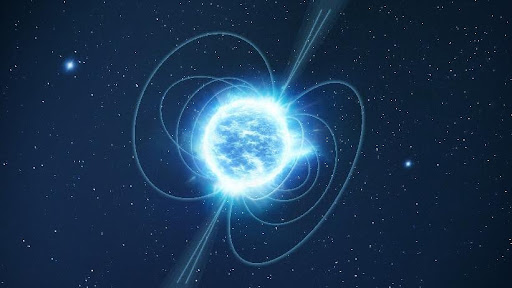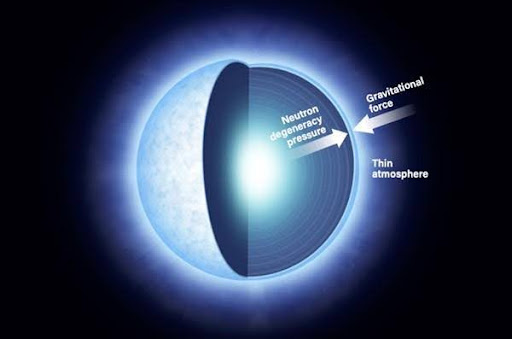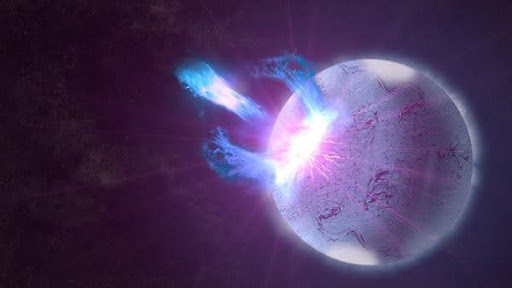What weighs more than Mount Everest yet could fit in your city’s downtown district? No, it’s not science fiction—it’s a neutron star. When a massive star dies in a brilliant supernova (exploding star), it leaves behind a core so dense, that even atoms get crushed. Neutron stars are not just leftovers—they are cosmic powerhouses hiding bizarre physics under their tiny, terrifyingly heavy shells. Let’s explore these wonderful yet Mysterious ones today.
At “Space India”, during the session “The life cycle of a star”, students excitedly explore how a tiny nebula transforms into a massive supernova or a quiet white dwarf. They eagerly watch animations of stars being “born” and “dying,” amazed by the cosmic drama unfolding. With glowing eyes and curious questions, they dive into discussions, imagining themselves as stargazers and future space explorers.

Being one of the most fascinating objects in the universe, these are the remains of the cores of gigantic stars which have reached the end of their lives. Neutron stars, which are made up almost completely of neutrons (particles which are found inside the atom of a nucleus), are one of the evolutionary endpoints of large stars. They are created when a big star explodes as a supernova. The majority of neutron stars that have been found thus far are quite young. They can weigh 2.1 times more than the weight of our sun while only having a radius of around 10km. This makes them unimaginably dense- just a sugar cube of this matter would weigh a trillion kilograms on Earth.
How do they form?
The outward push of the photons is outweighed by the inward pressure of gravity when stars run out of hydrogen to fuse into helium. The star consequently falls in on itself. Nuclear fusion continues in the outer layers causing them to swell but their core continues to collapse. Some cores, however, are saved from further collapse by a quantum phenomenon called ‘neutron degeneracy pressure’ and are left behind as neutron stars.

Are there any of types neutron stars:
Indeed, there are 2 types of neutron stars. Magnetars and Pulsars. Magnetars have an electric field so intense it causes starquakes on the surface. This breaks the star’s crust, producing incredibly bright flashes of gamma rays.

While Pulsars revolve at incredibly high velocities. The fastest known pulsar spins 43,000 times per minute, and emits streams of light that resemble flashes because they move quickly in and out of our field of vision.

Collision of neutron stars
When neutron stars collide, they merge, creating an even larger neutron star. The violent event leads to a huge explosion resulting in what’s called a kilo nova. This releases energy that is millions of times greater than that of the Sun, releasing space-bending gravitational waves.

These stellar remnants challenge our understanding of matter and physics, as conditions inside them can’t be recreated on Earth. Scientists believe the centre of a neutron star may even contain exotic forms of matter like quark-gluon plasma or hyperons- ideas that are unconfirmed but are actively being studied.
In short, neutron stars aren’t just remnants of dead stars- they are laboratories of physics at its most extreme, offering a glimpse into the fundamental workings of the universe.
—
If you like the blog, enrol your school or yourself (K-12 student) in our School Programs or Online Programs, call us at +91-74020 74020 or write to us for any query: getintouch@space-india.com

